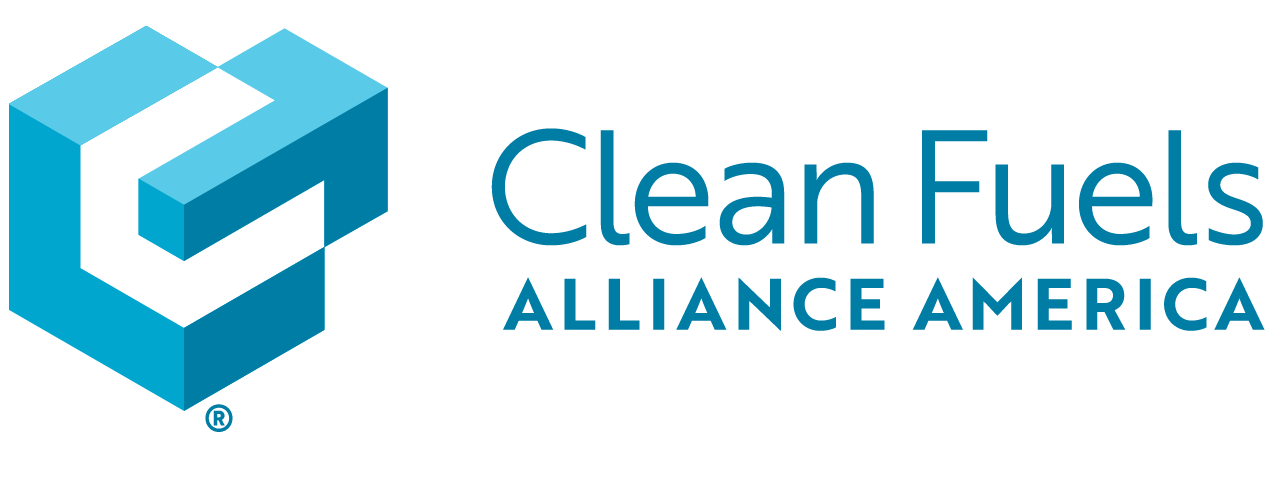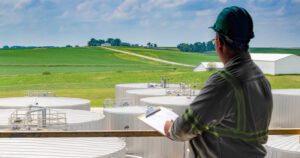By Clean Fuels Alliance America
Published in SAF Magazine | Issue 2
The aviation industry stands at the cusp of a monumental shift as it grapples with its significant carbon footprint. Sustainable aviation fuel (SAF) is poised to revolutionize air travel, but widespread adoption hinges on overcoming several critical challenges. The industry is on the verge of this transformation, yet achieving it requires advancements in technology, scaling up production and understanding the role of policy.
SAF, a cleaner and more sustainable alternative to conventional jet fuel, has generated robust demand from the outset. Airlines are urgently seeking to reduce greenhouse gas emissions, driven by both environmental responsibility and external pressures such as the flight-shaming movement popularized by Greta Thunberg. In a recent episode of Clean Fuels Alliance America’s “Better. Cleaner. Now!” podcast, Veronica Bradley, Clean Fuels director of environmental science, emphasized that this proactive stance by the airline industry marks a significant shift from fossil fuels to renewable sources, a necessary step toward reducing the aviation sector’s carbon footprint. “The airlines are committed to decarbonizing and see liquid renewable fuels as the only viable mechanism for achieving this in the near term,” Bradley said.
However, the scale of the challenge is daunting. In 2022, the U.S. consumed approximately 24 billion gallons of jet fuel, while global consumption was around 99 billion gallons. Bradley highlighted that current SAF production is still in the millions of gallons, orders of magnitude away from meeting this demand. Even so, the industry is optimistic about ramping up production. “There are numerous projects projected to come online between now and 2027,” said Jonathan Martin, Clean Fuels director of economics and market analytics.
New production projects span various technologies, including alcohol-to-jet and hydroprocessed esters and fatty acids (HEFA), the latter being similar to processes used for renewable diesel. Martin elaborated on the technical differences between conventional jet fuel and SAF. Drawing on his background in chemical engineering, he explained that SAF is more paraffinic, consisting of long, straightchain molecules, whereas conventional jet fuel includes a mix of these molecules and aromatic compounds, which are crucial for certain engine functions. “One of the main differences is that aromatic compounds are needed for the O-rings and other components inside the plane to function properly,” Martin said.
Currently, SAF must be blended with conventional jet fuel, with blending limits ranging from 5% to 50% to meet ASTM standards.
The United States and European Union are at the forefront of SAF production. Companies like Diamond Green Diesel are converting existing facilities to SAF production in response to high demand. Bradley pointed out that historically, only a few companies produced SAF at commercial volumes, but this is rapidly changing. “We will see a much more diverse portfolio of SAF producers in the near term,” she said.
Looking ahead, the industry faces both challenges and opportunities. While the immediate focus is on scaling up SAF production, understanding the role of supportive policies and incentives is also crucial. Bradley highlighted how policy can influence both production and adoption of SAF. “Airlines are looking for opportunities to partner with agencies and governments that support decarbonization,” she said.
At the federal and state levels, there are already significant efforts to incentivize SAF use, which may facilitate its broader adoption. While SAF is still in its early stages, it holds tremendous promise for the aviation industry. With strong demand from airlines, ongoing technological advancements and the role of supportive policies, SAF could play a pivotal role in reducing the carbon footprint of air travel. As Martin succinctly put it, “The outlook is very positive; the advantage SAF producers have is a willing customer base.”
The future of aviation is not just about flying higher or faster, but about flying cleaner—and that future is being shaped now.
ABOUT CLEAN FUELS ALLIANCE AMERICA
Made from an increasingly diverse mix of resources such as recycled cooking oil, soybean oil, and animal fats, the clean fuels industry is a proven, integral part of America’s clean energy future. Clean Fuels Alliance America is the U.S. trade association representing the entire biodiesel, renewable diesel and sustainable aviation fuel supply chain, including producers, feedstock suppliers and fuel distributors. Clean Fuels receives funding from a broad mix of private companies and associations, including the United Soybean Board and state checkoff organizations.




